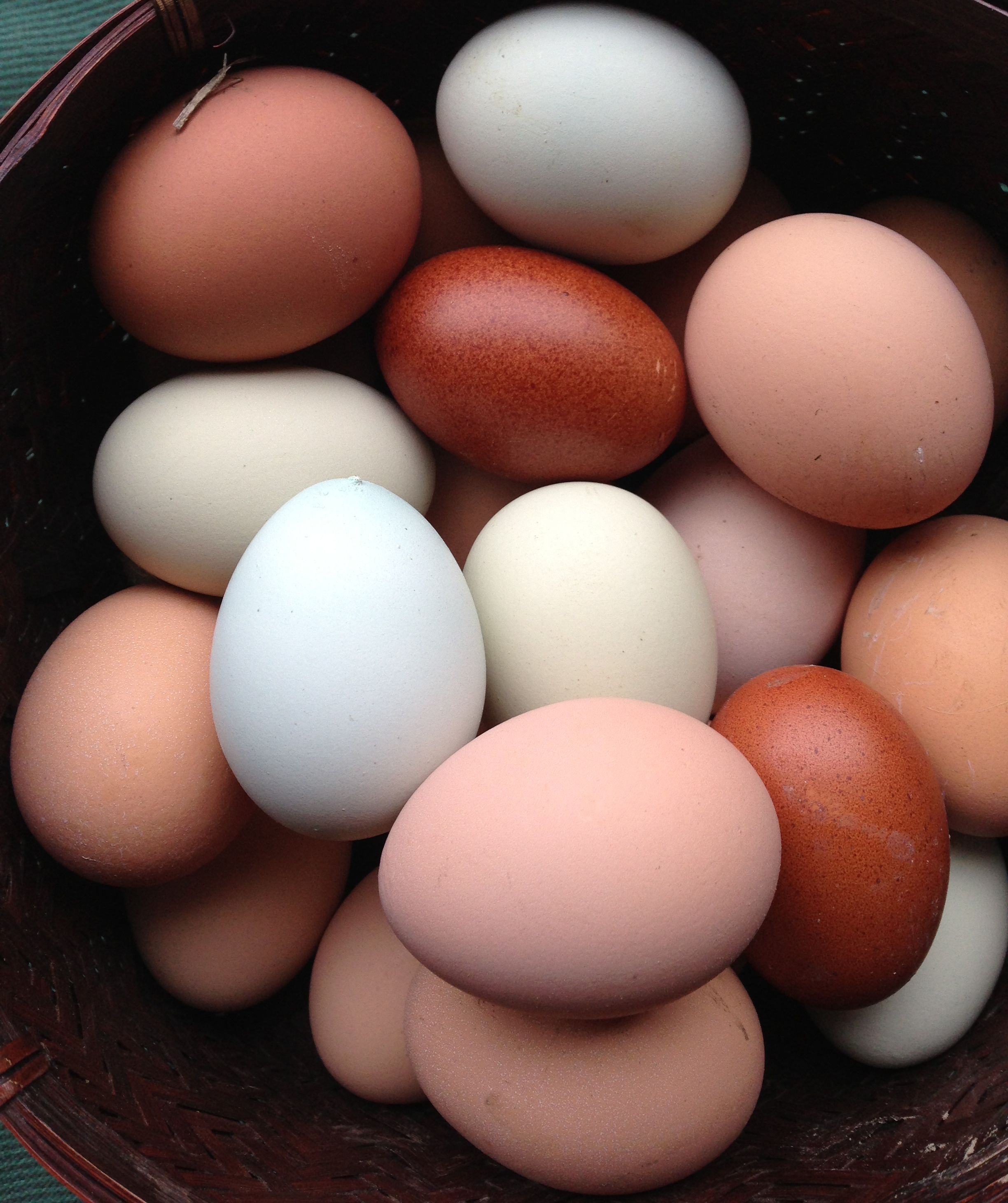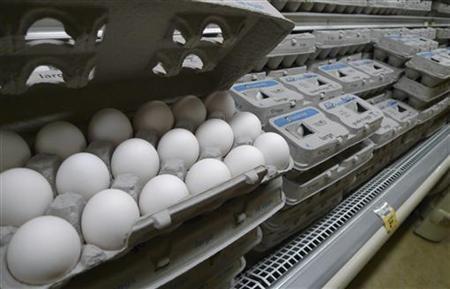Your cart is currently empty!
Month: December 2013
-
Incredible Eggs

Beautiful Eggs Until I started raising chickens I had no idea eggs could be so beautiful. The variety of shapes, sizes, and colors in endless. There are few things more magical than holding an egg that is so fresh it is still warm. Nothing compares to the taste of an egg that is minutes old.
The powers that be have decided that consumers don’t need to know how fantastic eggs can be. They want you to believe that an egg is an egg is an egg, and that it doesn’t matter how old it is. Nothing could be further from the truth. The eggs from chickens which run around and exercise all day are so rich you don’t need to salt them. Their yolks are so thick and golden, that they taste incredible even raw. And if you want to make a soufflé so fluffy it practically floats away, you need an egg laid that day.
But when you need to produce eggs by the millions and millions, and make them as cheap as possible, the only way to do it is to cut costs, streamline operations, and make everything the same. Any sign of uniqueness is erased. What ends up on the store shelves are endless cartons of nearly identical blandness.
When you go to the supermarket and shop for eggs, you encounter racks and racks of identical looking eggs. You’ll never see a date as to when the eggs were laid. You’ll never see the name of the hen which laid the egg. If they are USDA graded eggs, you will see a 3 digit number which tells the day of the year (January 15 is 015, February 20 is 051, etc.) the eggs were washed, graded, and placed in the carton, however this may not be the day the eggs were laid. So you really have no idea when that egg was laid. I’ve often wondered why the large egg producers don’t want customers to know when their eggs were laid. I’m baffled as to why consumers don’t demand to know when the eggs they are buying were laid.
All this mass production and efficiency obscures the incredible variety of eggs chickens lay. It takes the fun out of getting eggs. Every carton is the same as every other carton. When you open it up, there are no surprises, nothing to make you smile. You have no idea that even the same chicken will lay a slightly different day each time. The size, shape, and shade varies slightly. Gathering the eggs throughout the day is an adventure. What did Lucky lay today? Where did Happy lay her egg this morning? No wonder so many people are bored out of their minds.
Nadia Arumugam of Forbes wrote an interesting article Why American Eggs Would Be Illegal In A British Supermarket, And Vice Versa. It’s an interesting read and one wonders how standards in developed countries can be so different.

Supermarket Eggs Another good read from Forbes, is Industry has sway over food safety system by Christopher Doering.
-
Seven Day Old Chicks
[wpvideo Fp9ttXtr]
The chicks are seven days old now. The mother has brought them out to feed with the other chickens. It’s a sunny, beautiful day today and she may take them outdoors today for the first time.
-
Six Day Old Chicks
[wpvideo 4m1afCCz]
When a mother hen senses danger, she’ll spread her wings and puff up, doubling the size of her appearance. She starts showing this behavior even before her chicks hatch. While she is incubating her eggs, she’ll come off the next once a day to eat and drink. A brooding hen will often puff up around other chickens as if she is protecting a brood.
-
Five Day Old Chicks
[wpvideo aJ76s0Hi]
The chicks are five days old. I opened their nursery so their mother is free to take them wherever she wants. The next time you buy chicken ask your grocer, “Was this chicken raised by a mother?” Don’t worry about the blank stares you get from your grocer, or that this-customer-is-nuts look on their face. You are the one who is going to be putting that chicken in your mouth. You have a right to know everything about that chicken. You have a right to demand that chicken you eat has had a wonderful life. Call me crazy, but customers are not nearly demanding enough about the quality of food grocers sell. -
Four Day Old Chicks

Mother with 4 day old chicks The chicks are four days old today and doing well. In a few more days, I’ll open the nursery so the mother can start taking them outside. Some mothers have their chicks outside right aways, others keep them close to the nursery for a week to 10 days before taking them outdoors. Each mother has her own chick-rearing style. In this age of making everything exactly the same, and turning food products into commodities to trade on mercantile exchanges, I’m taking the opposite approach. At A Man and His Hoe, no two chickens are ever the same. It’s impossible to lump them all together and treat them all the same. When you pick out a chicken in the supermarket, do you ever wonder if that chicken was a shy one, an adventurous one, a kind one, or a bossy one? There are all types of chickens. When you purchase one of my chickens, you can ask me what kind of personality the chicken had. I watch each chick as it grows. I can tell you which mother it had, and what mischief it got into.
[wpvideo EghaxzWT]